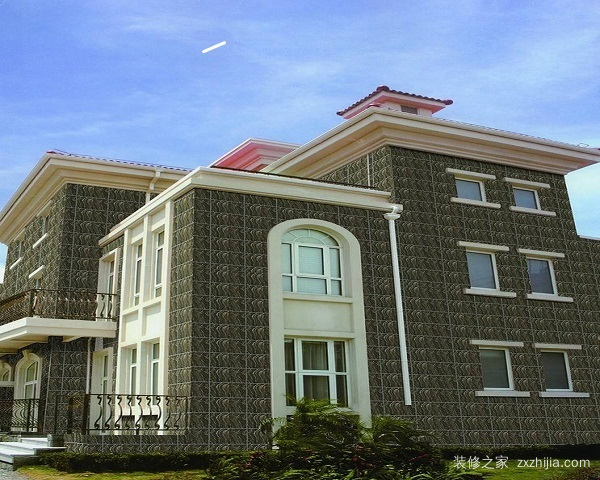What are the precautions for tiling the exterior wall ? In the tough renovation process, the home finally ushered in some color-tiling. The gray-faced home is affixed with beautiful bricks, adding some fascinating colors, and gradually has temperature and appearance. But how much do you know about decoration and tiling? Below, let's take a look at the related content of the decoration home network Xiaobian!

1. When laying the paving, the brick-laying method should be determined according to the paving form. If there is a directional pattern, the product should be laid in the direction shown in the figure to obtain the best effect. Pay special attention to the fact that some bricks with inconspicuous texture such as micro-powder bricks are actually It is also directional. The general mud workers will not notice this detail. When laying the micro-powder bricks, they will not pay attention to the direction and make it messy.
2, the angle line specifications should be consistent with the floor tile specifications and the floor tiles are laid. Generally, when tiling in the living room or bedroom, everyone always likes to lay the 8-15MM corner line, but many people do not pay attention to the specifications, not even Will go to the seams, it is not beautiful.
3, it is best to use the seams to be laid, at present, many users in the paving of the floor tiles, the pursuit of paving beautiful and the use of no seams. In fact, the difference between the thermal expansion and contraction coefficient of the base layer, the adhesive layer and the tile itself is very different when the floor tiles are laid. Under the thermal cold stress damage of 1-2 years, the problem of tiles bulging and breaking may be caused by the no-seam tiling. . When such problems are re-paved, the ratio of the cost to the first paving cost is about 4:1. Moreover, the seam is affixed with the characteristics of the retractable space, and it is easy to ensure that the tiling surface is neatly tidy, avoiding the skew caused by the slight deviation of the brick shape or the size, and affecting the overall effect of the tile tiling. The outer wall of the general wall is 5mm. Some culture stone can even leave 1CM, inner wall brick: 1.5mm, floor tile: 2-3mm, antique brick 3-5mm, some special effect antique bricks leave 5-10MM.

4, tile paving order wall tiles should be laid from the bottom up, need to soak in the water for at least 30 minutes, dry and dry to be able to lay, of course, the current porcelain antique brick wall or polished brick wall is not soaked, That is to say, products with high water absorption rate need to be immersed in water and then laid; the ratio of cement to sand on the wall is 1 to 4, and the ratio of cement to sand on the ground is 1 to 3.
5, after paving for 1 hour, the cement, caulking agent or other sticky objects left on the brick surface should be wiped clean in time, because it is more difficult to clean after the adhesion agent is attached for four hours.
6. After 12 hours of paving, the brick surface should be tapped for inspection. If it is found that there is an empty drum sound, it should be re-laid.
7. After the brick paving is completed for 24 hours, walk it thoroughly, scrub it thoroughly, mix the detergent with water, and thoroughly clean the tile.
The above is a detailed answer to the Xiaobian, I don't know if you are satisfied with the introduction of the decoration home network Xiaobian~ If you want to know more about the exciting content, please continue to pay attention to our decoration encyclopedia!
More related wonderful reading:
How to paste tiles? Exterior wall tiling process
Insert is a general term. In the mold, it refers to the irregular Mold Parts used in the mold, which plays a role in fixing the space between the template and filling the template.
Inserts can be square, round, or flat. Like all mold accessories, the precision requirements are very high. Generally there is no finished product, customized according to the needs of the mold.
Types of inserts: pins, blocks, columns, rings, etc.
Material: 1.2343, 1.2344, SKD61, SKH51, 1.3343, ASP23, SKD11, etc.
Hardness: above 45-60HRC
Standard accuracy: ± 0.01mm
Inserts are widely used in plastic molds
Gate Inserts,Mold inserts,Insert Mold Parts,Connector Mold Parts
Dayue Precision Technology (Dongguan) Co., Ltd. , https://www.dayuechn.com